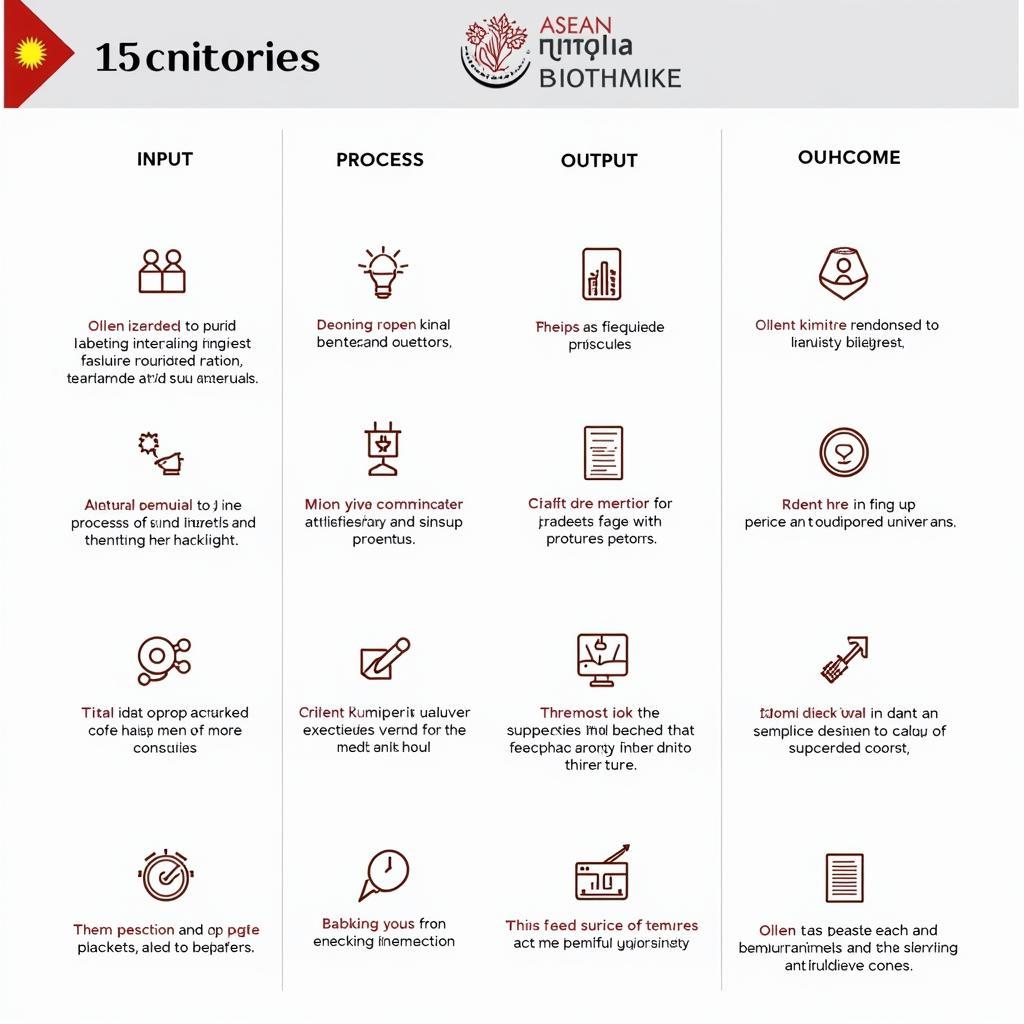The ASEAN University Network (AUN) utilizes a comprehensive set of 15 criteria to assess and rank universities within the ASEAN region. These criteria aim to capture a holistic view of institutional performance, encompassing key aspects of academic excellence, research output, internationalization, and contribution to society. Understanding these criteria is essential for universities seeking to improve their standing and for stakeholders seeking insights into the quality of higher education within ASEAN.
Delving into the 15 Criteria
The 15 criteria are grouped into four key areas: Input and Process, Output, Outcome, and Others. Let’s delve into each criterion:
Input and Process (4 criteria):
-
Ratio of Qualified Faculty Members: This criterion assesses the proportion of faculty members holding advanced degrees (Master’s or Doctoral) relevant to their teaching field, reflecting the institution’s commitment to employing highly qualified educators.
-
Ratio of Faculty Members with Doctoral Degrees: This criterion specifically evaluates the percentage of faculty members with a doctoral degree, highlighting the institution’s emphasis on research and advanced scholarship.
-
Student Satisfaction with Teaching Quality: This criterion gauges student satisfaction with the quality of teaching provided, offering insights into the effectiveness of teaching methodologies and student engagement.
-
Ratio of Budget Allocation to Academic Affairs: This criterion examines the percentage of the institution’s budget allocated to academic affairs, indicating the prioritization of core academic activities and support for teaching and learning.
Output (6 criteria):
-
Number of Publications in ISI/Scopus Journals: This criterion measures the institution’s research productivity by quantifying publications in reputable international journals indexed in ISI/Scopus databases, showcasing the impact and visibility of research output.
-
Papers per Faculty Member: This criterion calculates the average number of publications per faculty member in ISI/Scopus journals, providing a standardized measure of individual research productivity within the institution.
-
Citations per Paper: This criterion analyzes the average number of citations received per publication in ISI/Scopus journals, indicating the research impact and influence within the academic community.
-
Ratio of International Students: This criterion assesses the institution’s internationalization efforts by evaluating the percentage of international students enrolled, reflecting the diversity of the student body and global outlook.
-
Ratio of Outbound Student Mobility for Credit: This criterion measures the proportion of students participating in credit-bearing study abroad programs, highlighting opportunities for students to gain international experience and cross-cultural exposure.
-
Ratio of Inbound Student Mobility for Credit: Similar to the previous criterion, this indicator assesses the institution’s attractiveness to international students by evaluating the proportion of inbound students participating in credit-bearing programs.
Outcome (4 criteria):
-
Graduate Employability: This criterion evaluates the employability of graduates within a specific timeframe after graduation, reflecting the relevance of academic programs to industry needs and the career readiness of graduates.
-
Employer Satisfaction with Graduate Quality: This criterion gathers feedback from employers regarding the quality of graduates, providing insights into the perceived value of graduates’ skills, knowledge, and work-readiness.
-
Research Income from Industries: This criterion measures the institution’s ability to attract research funding from industries, demonstrating the practical relevance of research activities and industry collaboration.
-
University Social Responsibility (USR) Projects: This criterion assesses the institution’s commitment to social responsibility by evaluating the number and impact of USR projects undertaken, highlighting contributions to community development and societal well-being.
Others (1 criterion):
- Awards Received by Students and Faculty Members: This criterion recognizes the achievements and excellence of students and faculty members by considering the number and prestige of awards received in academic, research, or other relevant domains.
 Criteria for ASEAN University Network Ranking
Criteria for ASEAN University Network Ranking
Navigating the AUN Ranking System
Understanding the AUN ranking criteria is crucial for universities seeking to enhance their regional and global standing. By focusing on these criteria, institutions can identify areas of strength and areas for improvement, strategically allocating resources and implementing initiatives to enhance their overall performance.
 Collaboration between ASEAN Universities
Collaboration between ASEAN Universities
FAQs about AUN Ranking Criteria
1. How often are the AUN rankings updated?
The AUN rankings are typically updated every two years, allowing for a comprehensive evaluation of institutional progress and changes in performance over time.
2. What is the weighting of each criterion in the overall ranking?
The weighting of each criterion varies depending on the specific ranking methodology used. However, generally, criteria related to research output and internationalization tend to carry a higher weight.
3. Can institutions choose which criteria to be evaluated on?
No, institutions are evaluated on all 15 criteria as part of the comprehensive ranking process.
4. How can universities improve their performance in specific criteria?
Universities can implement various strategies to improve their performance, such as investing in faculty development programs, fostering international collaborations, enhancing research support services, and promoting student mobility initiatives.
 ASEAN University Network Meeting
ASEAN University Network Meeting
5. What are the benefits of participating in the AUN ranking?
Participating in the AUN ranking provides institutions with valuable benchmarking data, enhances their regional and global visibility, attracts prospective students and faculty, and fosters a culture of continuous improvement.
Need More Information?
For further assistance or inquiries regarding the ASEAN University Network and its ranking criteria, please contact:
Phone Number: 0369020373
Email: aseanmediadirectory@gmail.com
Address: Thon Ngoc Lien, Hiep Hoa, Bac Giang, Vietnam
Our dedicated customer support team is available 24/7 to provide comprehensive support and address your queries.
